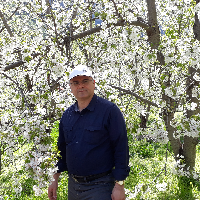Effect of putrescine foliar application on growth and tolerance of iberica dragon’s head (Lallemantia iberica) to lead stress
In the last two decades, soil contamination with heavy metals, including lead (Pb), has been increasing. Pb is the most important heavy metal that has polluted the environment and caused symptoms of plant toxicity such as limiting root and shoot growth, blackening of the root system and decreasing photosynthesis and the quantity and quality of yield. In many agricultural areas of Iran, including Zanjan, the presence of heavy metals, especially Pb, is always associated with the growth stages of plants, including medicinal plants. Native medicinal plants of Iran, including Lallemantia iberica have an important role in the treatment and prevention of diseases. The seeds of this plant are reconstituent, stimulant, diuretic, and expectorant and have a high content of oil and omega-3 fatty acid alpha linolenic acid. The use of polyamines such as putrescine (Put) is one of the new strategies to reduce the harmful effects of environmental stresses such as heavy metals. Polyamines, as plant growth regulators, have a protective role against membrane damage and lipid peroxidation and are involved in regulating processes such as cell division, enzyme activity, vascular differentiation, flowering, fruit ripening, and root growth. Due to the contamination of agricultural soils near the industrial areas with heavy metals and the need for medicinal plants in the country, this study was conducted to investigate the effect of Put spraying on the growth and tolerance of L. iberica to Pb stress.
The experiment was conducted as a factorial based on a randomized complete block design with six replications (three replications for grain yield and three replications for other traits) at the research greenhouse of the Faculty of Agriculture, the University of Zanjan in February 2018. The experimental factors were Pb stress in four levels (control, 300, 600 and 900 mg Pb/kg soil) from the source of Pb(NO3)2 and Put in two levels (0, and 0.5 mM). The Pb amount in the test soil was measured at the beginning of the experiment and considered as control. The Put spraying was performed before flowering begins (with the observation of the first flower bud) during 2 steps (half concentration at the 10-leaf stage and the other half 7 days later to prevent Put accumulation). Greenness index, proline content, leaf area, leaf, stem, and capsule dry weight, total shoot dry weight, root length and dry weight, and tolerance index at the flowering stage and grain yield at the harvest stage were measured. Analysis of variance was done by using SAS (9.1) software. Mean comparison was performed by Duncan multiple range test at 5% probability level.
The main effects of Pb stress and Put spraying on all the traits were significant. The interaction effect between them on greenness index, proline content, leaf, stem, and capsule dry weight, total shoot dry weight, root length, tolerance index, and grain yield was significant while its effect on leaf area and root dry weight was not. Pb stress, especially at 900 mg concentrations, decreased leaf area, greenness index, leaf, stem, and capsule dry weight, total shoot dry weight, root length and dry weight, tolerance index, and grain yield and increased proline content. The highest grain yield and tolerance index was obtained in the non-added Pb. Within each four Pb levels, Put spraying had the maximum amount of measured traits than the non-Put. Growth restriction and improper development of the root system under Pb stress reduced water and nutrient uptake and subsequently affected chlorophyll and photosynthesis, thereby reducing leaf area, shoot growth and plant yield, which the positive and significant correlation of root length with total shoot dry weight, leaf area, and greenness index (r=0.87***, r=0.61**, and r=0.9***, respectively) confirms the above content. The positive role of the Put can be due to its effect on increasing cell division, which ultimately improves plant growth. Positive and high correlations of leaf area with grain yield (r=0.69***) and greenness index with grain yield (r=0.87***) confirm that any factor which increases leaf area enhances producing and storing assimilate in the plant, leading to increased grain yield.
Overall, measured traits affected by increasing Pb concentration in the soil, however, Put spraying had improvement effects on these traits and with an increasing root length, greenness index and leaf dry weight led to an increase in the tolerance index of L. iberica under Pb stress. Also, the highest grain yield was found in Put spraying under control. Therefore, given the crisis of the increasing concentration of heavy metals, especially Pb in the agricultural soils, Put application can be suggested to increase Pb tolerance in L. iberica and to use this plant in Pb-contaminated areas to restore lost vegetation.
- حق عضویت دریافتی صرف حمایت از نشریات عضو و نگهداری، تکمیل و توسعه مگیران میشود.
- پرداخت حق اشتراک و دانلود مقالات اجازه بازنشر آن در سایر رسانههای چاپی و دیجیتال را به کاربر نمیدهد.


